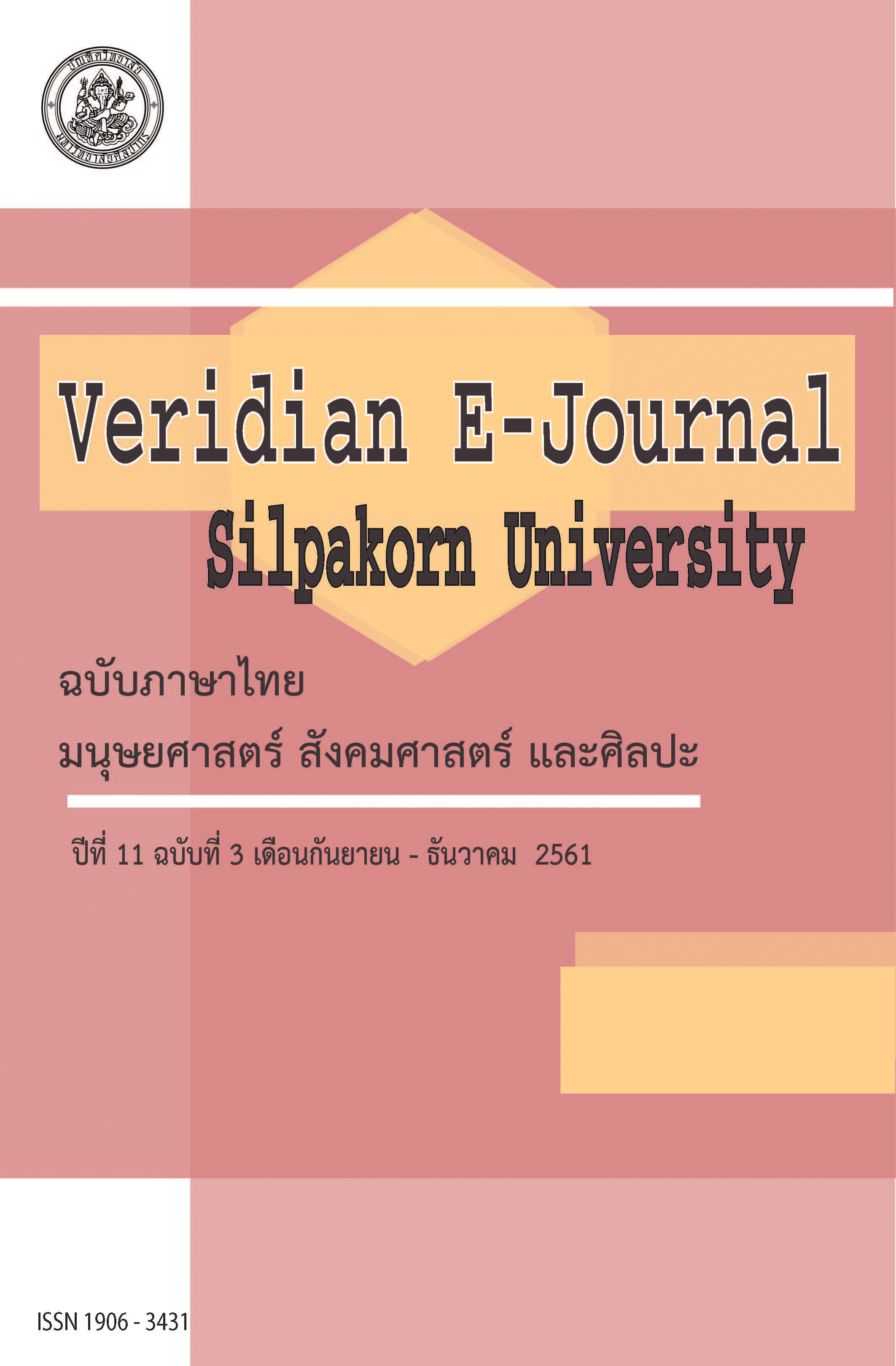ปัจจัยที่มีความสัมพันธ์กับรายได้ของเกษตรกรชาวสวนยางพาราในพื้นที่ สามจังหวัดชายแดนใต้ (The Factors Related to the Income of the Rubber Farmers in the Three Southern Border Provinces)
Main Article Content
Abstract
การวิจัยนี้เพื่อศึกษาปัจจัยที่มีความสัมพันธ์กับรายได้ของเกษตรกรชาวสวนยางพาราในพื้นที่ สามจังหวัดชายแดนใต้ และวิเคราะห์รูปแบบการส่งเสริมปัจจัยที่ส่งผลให้รายได้ของเกษตรกรเพิ่มขึ้นกลุ่มตัวอย่าง คือ เกษตรกรชาวสวนยางพารา จำนวน 400 คน และสุ่มตัวอย่างแบบชั้นภูมิตามจังหวัด โดยใช้ประชากรซึ่งเป็นเกษตรกรที่ขึ้นทะเบียนสมาชิกของการยางแห่งประเทศไทยแต่ละจังหวัดเป็นฐานในการคำนวณขนาดตัวอย่าง การเก็บรวบรวมข้อมูลเชิงปริมาณใช้แบบสอบถาม วิเคราะห์การถดถอยพหุคูณแบบเป็นขั้นตอน (Stepwise Multiple Regression Analysis) และข้อมูลเชิงคุณภาพจากการสัมภาษณ์เชิงลึก (In-depth Interview)จากผู้แทนของการยางแห่งประเทศไทยในพื้นที่สามจังหวัดชายแดนใต้
ผลการวิจัย พบว่า ปัจจัยที่มีความสัมพันธ์กับรายได้ของเกษตรกรชาวสวนยางพาราในพื้นที่สามจังหวัดชายแดนใต้ แบ่งออกเป็น 3 ประเด็น ดังนี้ รายได้จากการทำสวนยางพารากับสภาพสังคมและเศรษฐกิจของเกษตรกร มีค่าเฉลี่ย 1.88 (S.D = 0.28) อยู่ในระดับน้อย รายได้จากการทำสวนยางพารากับศักยภาพของเกษตรกร มีค่าเฉลี่ย 2.06 (S.D = 0.52) อยู่ในระดับน้อย และรายได้จากการทำสวนยางพารากับทัศนคติของเกษตรกร มีค่าเฉลี่ย 2.67 (S.D = 0.65) อยู่ในระดับปานกลาง ผลการทดสอบความสัมพันธ์ อย่างมีนัยสำคัญ (p-value <0.001) พบว่า รายได้จากการทำสวนยางพาราไม่มีความสัมพันธ์กับสภาพสังคมและเศรษฐกิจของเกษตรกร แต่มีความสัมพันธ์กับตัวแปรของศักยภาพของเกษตรกร คือ การถือครองที่ดิน ปลูกสวนยางพารา จำนวนสวนยางพาราที่ถือครอง และจำนวนชั่วโมงต่อวันในการทำสวนยางพารา ได้ร้อยละ 10.30 (R2= 0.103) และมีความสัมพันธ์กับตัวแปรของทัศนคติของเกษตรกร คือ ด้านการตลาด ด้านเงินทุน และด้านความมั่นคง ได้ร้อยละ 4.80 (R2= 0.048) ดังนั้นรูปแบบการส่งเสริมปัจจัยเพื่อเพิ่มรายได้แก่เกษตรกร เน้นการส่งเสริมการเกษตรแบบบูรณาการ โดยเฉพาะการส่งเสริมการเกษตรที่ยึดหลักตามแนวคิดทฤษฎีเกี่ยวกับการพึ่งพาตนเอง ช่วยให้เกษตรกรลดการขายที่ดินทำกิน มีทักษะความรู้การลดต้นทุนการผลิตยาง รักษาคุณภาพยางอย่างมีจรรยาบรรณในอาชีพ และยกระดับตนเองเป็นธุรกิจการเกษตรในอนาคต
The purposes of this study were to investigate the factors related to the income of the rubber farmers in the three Southern Border Provinces and to analyze the factors that contributed to the increase of incomes of the rubber farmers in the three Southern Border provinces. The sample groups selected for this study comprised of 400 rubber farmers in the three Southern Border Provinces by using stratified sampling method in each province. The populations were the rubber farmers who registered as a member of Rubber Authority of Thailand in the Three Southern Border Provinces. The quantitative data were collected through the interviews and analyzed through stepwise multiple regressions. Qualitative data were collected by using in-depth interview for the representatives of Rubber Authority of Thailand in the Three Southern Border Provinces.
The factors related to the income of rubber planters in the three southern border provinces are divided into 3 areas as follows; The income from rubber plantation and social and economic conditions of the farmers was at a low level, on average 1.8 (S.D = 0.28). The income from rubber plantation and the farmers' potential was at a low level, on average 2.06 (S.D = 0.52). The average income from rubber plantation and attitude of farmers was at moderate level, on average 2.67 (S.D = 0.65). The correlation results showed that the income from rubber plantation was not correlated with socioeconomic status of the rubber farmers. However, the income from rubber plantation was correlated with the variable of the farmers' potential. The numbers of rubber planting areas that farmers hold, the land tenure and the number of hours per day in the rubber plantation areas could explain the variance of income as 10.30 percent (R2 = 0.103). The statistically significant correlation with the farmers' attitude was marketing, capital and security (p-value <0.001). The variance of income can be explained by 4.80 percent (R2 = 0.048). Therefore, the model for promoting the factors to increase income of the farmers was integrated agriculture, especially the agriculture based on the theory of Self-Reliance which could help the farmers earn knowledge and reduce the cost of producing rubber. The farmers can maintain the quality of rubber professionally. The increase of income could help farmers avoid having to sell their own land and be able to run agricultural business by themselves in the future.
